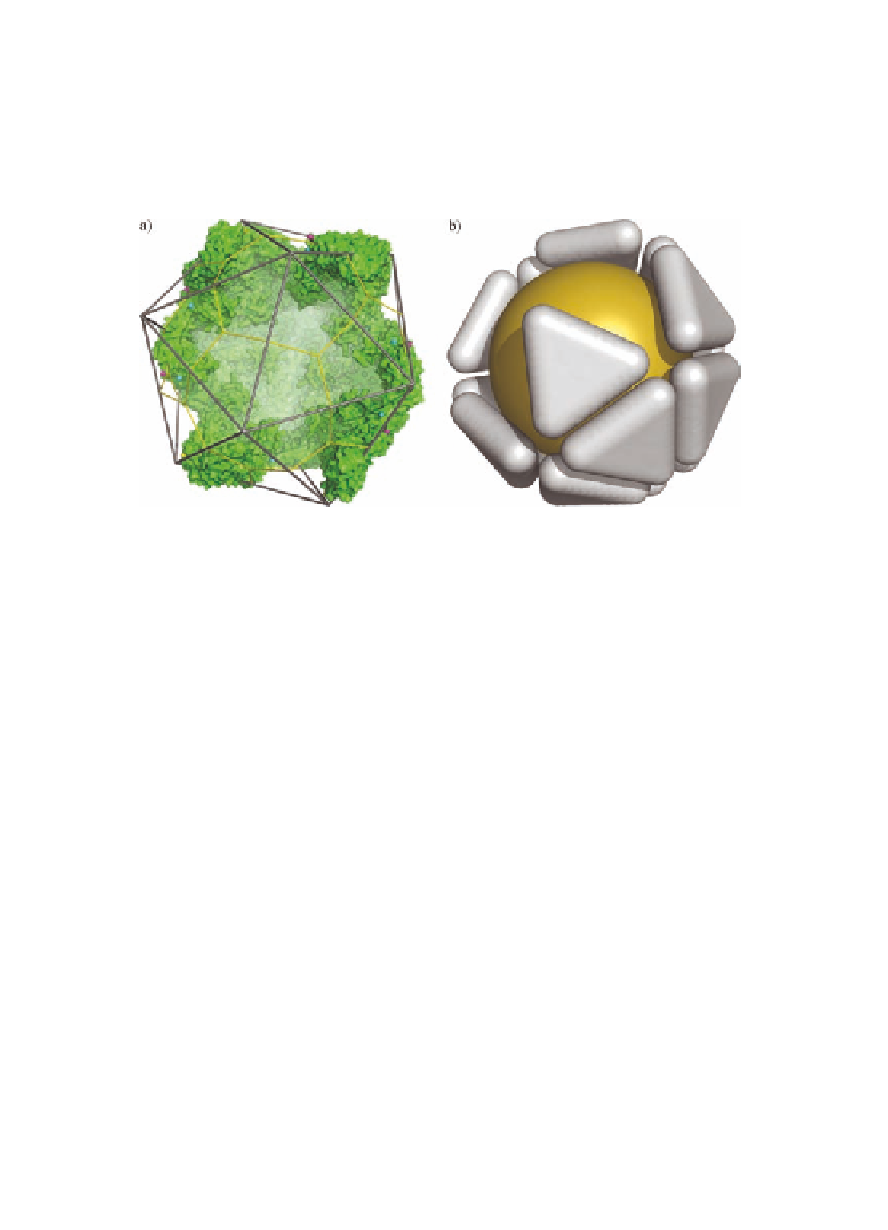Biology Reference
In-Depth Information
of the forces responsible for the integrity of the self-assembled shell.
Indeed, the container must be strong enough to hold its content and
to travel through various natural barriers. On the other hand, it must
be easily dismantled where the drug must be released. This subtle
balance must be gauged through a scanning study of the number and
nature of hydrogen bonds holding the supramolecular containers.
Figure 2.20
(a) Half capsid of the satellite tobacco necrosis virus. (b)
Capsule obtained by spherical tiling of triangular subunits.
The available space for guests is shown as a yellow sphere.
2.7
Conclusion
Supramolecular nanotubes and nanospheres can be built from small
subunits incorporating
-amides, respectively. These objects
assembled by means of the same hydrogen bonds as those found
in natural biopolymers provide novel prototypes that can be easily
tuned-up by grafting side chains or groups [93]. So far, stacking of
toroidal and tiling of triangular molecules have been mastered to
yield the desired endless tubes and spherical capsules. However
the research in this rich branch of non-covalent synthesis is just
starting. A lot remains to be discovered about the rules governing
the packing of highly polar tubes [94-97]. This information would
shed light on the way related tubular
E
and
Z
α
-helicesinfluenceeachother
inglobularorfibrousproteinsandperhapshowproteinfoldingtakes
place. This knowledge might then become useful to rationally design
more complex objects like those necessary to build the molecular
machinesthatwedreamof[4-8,98-100].Wemuststillrealizethat

Search WWH ::

Custom Search